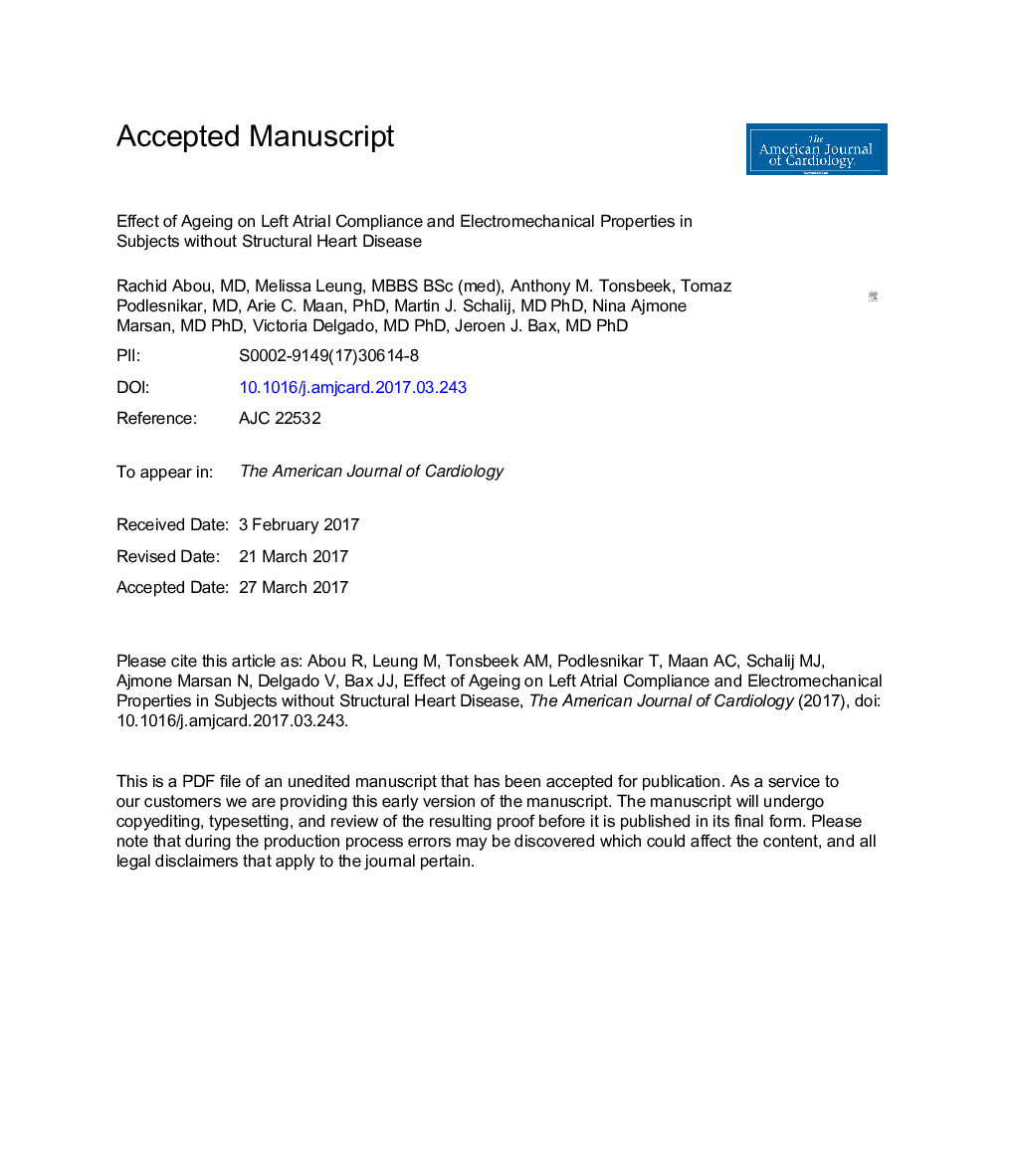| Article ID | Journal | Published Year | Pages | File Type |
|---|---|---|---|---|
| 5595582 | The American Journal of Cardiology | 2017 | 25 Pages |
Abstract
Aging is associated with changes in left atrial (LA) structure and function. The present study aimed at describing the effect of aging on LA properties in a large cohort of subjects without structural heart disease. We divided 386 subjects (mean age 58 years [range 16 to 91]; 188 men [49%]) clinically referred for echocardiography according to age groups. The P-wave dispersion (PWD), reflecting total atrial conduction time, was measured on a 12-lead surface electrocardiogram as the difference between maximum and minimum P-wave duration. The PA-TDI duration reflecting the total atrial conduction time was measured on tissue Doppler imaging (TDI) as the time between onset of P wave on surface electrocardiogram to peak Aâ²-wave velocity. Two-dimensional speckle-tracking echocardiography was used to assess LA reservoir function, reflecting LA compliance. In the overall population, mean PWD, PA-TDI, and LA reservoir strain were 43 ± 12 ms, 129 ± 27 ms, and 36 ± 13%, respectively. Increasing age was independently associated with prolonged PWD (β = 0.161; p <0.001), PA-TDI (β = 0.476; p <0.001), and reduced LA reservoir strain (β = â0.259; <0.001), suggesting age-related fibrotic changes of the LA myocardium. The association between age and LA reservoir strain was modulated by body mass index (β = â0.582; p <0.001) and LA volume index (β = â0.117; p = 0.014). In conclusion, aging is associated with longer PWD and PA-TDI duration along with a decrease in LA reservoir function. Obesity and larger LA volumes are independently associated with reduced LA compliance.
Related Topics
Health Sciences
Medicine and Dentistry
Cardiology and Cardiovascular Medicine
Authors
Rachid MD, Melissa MBBS, BSc (Med), Anthony M. MSc, Tomaz MD, Arie C. PhD, Martin J. MD, PhD, Nina MD, PhD, Victoria MD, PhD, Jeroen J. MD, PhD,
